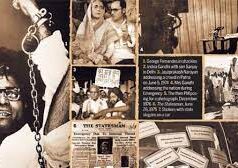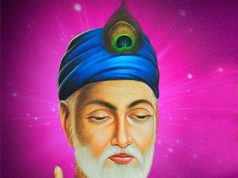
As the descendants of the world’s oldest civilisation, it is our Dharma or the performance of duty to preserve not only the teachings of the Ramayana but also the remnants of its historical presence
Once again, the cultural ethos of a nation is to stand the test of judicial interrogation when Ram Janmabhoomi-Babri Masjid case is next up for hearing in the Supreme Court.
The outcome of the case may not have any bearing on the people’s predisposition to Ram as an idol of moral courage.
Whether it is the utopian desire to achieve ‘Ram Rajya’ or remembering Ram in daily pleasantries exchanged among the masses, Ram is synonymous with the social ethos of our nation. However, the outcome of the case may have a bearing on the polity of the country and will definitely have a bearing on our conviction for ‘Dharma’ of this land.
The essence of our civilization incorporates the righteous path, a legal system which iterates duty and propagates ethics which are beneficial to the well-being of the State and its citizens.
A piece of land under two acres has, in some ways, been holding us collectively as a nation in limbo. Is the Ram Temple really only about acquiring a piece of land?
No, it is about justice and vindication of our heritage. As the descendants of the world’s oldest civilisation, it is our Dharma or the performance of duty to preserveand nurture not only the teachings of the Ramayana but also the remnants of its historical presence.
An Austrian priest Joseph Tiefenthaler who visited India during 1785 wrote in his book, History and Geography of India, that Hindus who refused to give up the place in Ayodhya believed it to be the birthplace of Lord Ram and they continue to come to the place despite Mughal administration efforts to prevent them from doing so.
He wrote that the Hindu community had constructed a platform known as Ram Chabutra in the compound of the Masjid and undertook three circumambulations of it and then prostrate themselves flat on the ground before it.
The facts of the existence of a temple at the site have been submitted by the Archaeological Survey of India (ASI) and acknowledged by the courts long ago. According to the 2011 census, the demography of Ayodhya town shows 93.3 per cent Hindu population and 6.93 per cent Muslim among nearly 56,000 residents.
It is a town which has nearly a thousand temples and less than 20 mosques (eight of which have been taken over by ASI as no one offers prayers in them).
One is hard-pressed to discern any significant role of the disputed Babri Masjid land in the lives of local Muslims when there are no takers for other mosques in town.
In the meanwhile, a strange appropriation has been attempted by pseudo liberals in creating a distinction between ‘Hindu’ and ‘Hindutva’ where Hindutva is projected as the ‘bad boy’ of the faith.
Hindutva could simply be the adjective of Hindu, drawing energy from the philosophy of ‘one truth’, inclusive of culture, polytheism and putting it to practice.
Hindu and Hindutva have a synergy. Pitting the yearning of the masses for a Ram Temple at Ayodhya as ‘Hindutva’ against giving away the land for asocial cause like establishing a hospital as being ‘Hindu’, the pseudo-brigade vehemently tries to build a narrative which inflicts a sense of guilt on those who aspire to see a Ram Temple at Ayodhya and takes away the sense of pride from the majority community in India.
Charity is integral to Indic faiths and that is the reason people are urged to keep aside a portion of their wealth for donation or practice good deeds such as constructing ‘dharamshalas’ as a part of following their Dharma of generosity and giving back to society. But how can a community donate its sense of identity, pride and faith? How does one give away the devotion and spiritual fidelity one has to one’s heritage?
Some public figures who are ostensibly on a path of rediscovery of faith and are defining why they are Hindus allege that an identifiable God like Ram makes the faith semitic. That is a highly limited understanding of the faith.
C Rajagopalachari, one of the first recipients of Bharat Ratna who served as the last Governor-General before India became a Republic in 1950, wrote that one cannot understand Hindu Dharma unless one knows Ram and Sita, Bharat, Laxman, Ravana and Hanuman.
He said that it is the Ramayana and Mahabharat that bind our vast numbers together as one people, despite caste, social practices and language which seemingly divide them. Mahatma Gandhi said a nation’s culture resides in the heart and the soul of its people.
While pseudo liberals downplay the pride people take in Ram, the eternal cultural icon of the nation is on a perpetual journey, traversing along with the social-cultural transitions of our land as a benign and edifying influence.
By Geeta Bhatt
(The writer is an Associate Professor at the University of Delhi and a Member of its Academic Council)
Courtesy: The Pioneer














